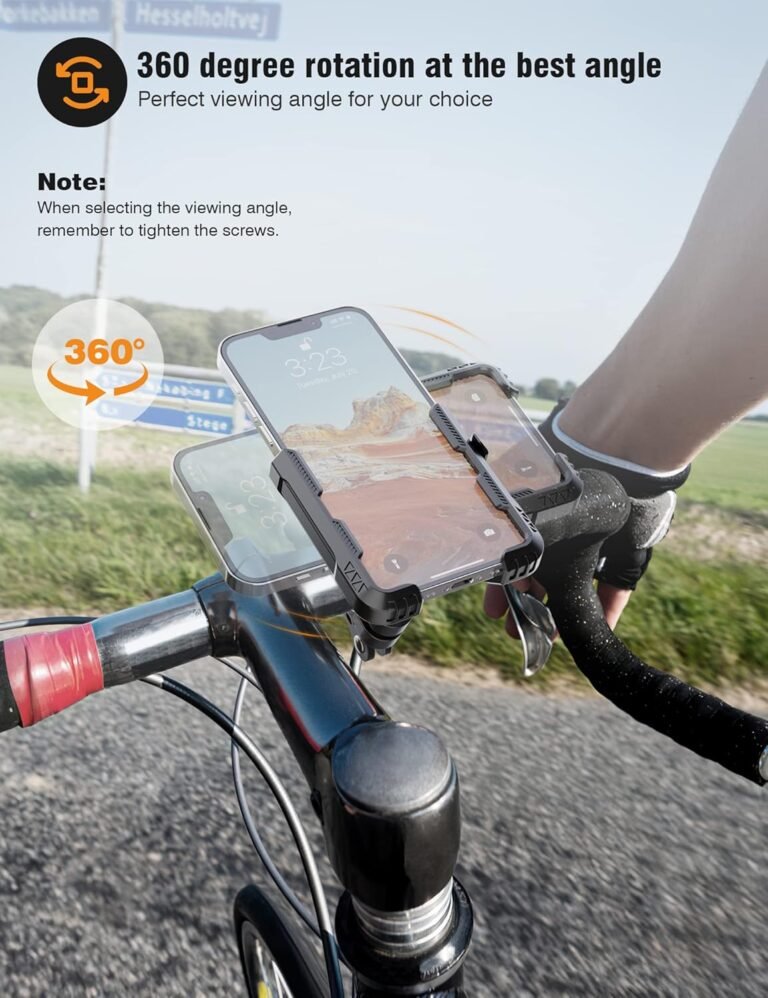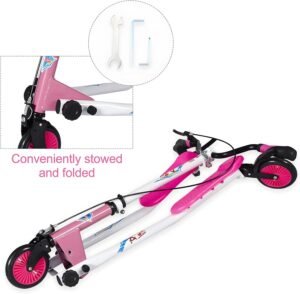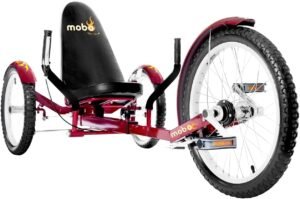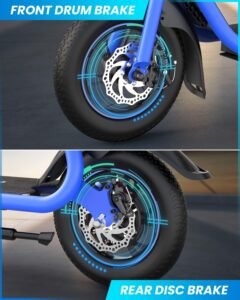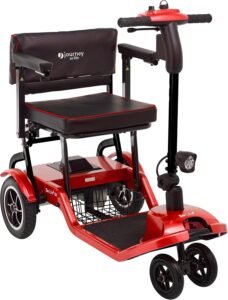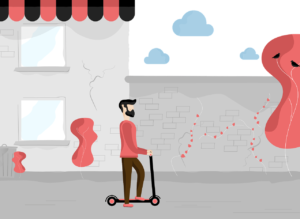
Welcome to “The Ultimate Guide to Mastering Scooter Braking” where you will learn everything you need to know to become a confident and skilled scooter rider. From understanding the importance of proper braking techniques to mastering emergency stops, this article will guide you through the essential skills needed to navigate the streets safely and smoothly. So hop on your scooter and get ready to become a braking pro in no time! Have you ever found yourself struggling to brake smoothly and efficiently on your scooter? Do you want to feel more confident and in control while riding? Look no further! In this ultimate guide, we will walk you through everything you need to know about mastering scooter braking. Let’s dive in!

This image is property of pixabay.com.
Check out our product reviews!
Understanding Scooter Brakes
Before we get into the nitty-gritty of mastering scooter braking, it’s important to understand the basic components of your scooter’s braking system. Scooters typically come equipped with two types of brakes:
-
Drum Brakes: These brakes are located inside the wheel hub and are operated by a cable, which causes the brake shoes to expand and make contact with the inner surface of the drum.
-
Disc Brakes: These brakes consist of a rotor attached to the wheel, and a caliper that houses brake pads. When you squeeze the brake lever, the brake pads press against the rotor, creating friction that slows down the scooter.
Both types of brakes work by converting kinetic energy into heat through friction, thereby reducing the speed of the scooter. Understanding how your scooter brakes function is crucial in mastering the art of braking effectively.
Tips for Better Braking
Now that you have a basic understanding of scooter brakes, let’s dive into some tips to help you improve your braking technique:
-
Apply both brakes: While some scooters only have one brake lever, it’s essential to use both brakes simultaneously for maximum braking power.
-
Brake progressively: Instead of slamming on the brakes, apply them gradually to prevent skidding or loss of control.
-
Look ahead: Anticipate the need to brake by scanning the road ahead and adjusting your speed accordingly.
-
Practice emergency stops: Find a safe area to practice emergency stops to build muscle memory and improve your reaction time.
By incorporating these tips into your riding routine, you’ll gradually improve your braking skills and become a more confident scooter rider.
Types of Braking Techniques
When it comes to scooter braking, there are several techniques you can use depending on the situation. Here are some of the most common types of braking techniques:
-
Standard Braking: This is the most basic form of braking, where you simultaneously apply both the front and rear brakes to slow down or stop the scooter.
-
Engine Braking: Also known as downshifting, engine braking involves using the scooter’s engine and transmission to slow down instead of the brakes. This technique is useful for maintaining control on steep descents.
-
Trail Braking: This advanced technique involves gradually releasing the brakes while entering a turn, allowing you to carry more speed through the corner before applying the brakes again.
-
ABS (Anti-lock Braking System): Some scooters come equipped with ABS, which prevents wheel lock-up during hard braking, reducing the risk of skidding and improving stability.
Each braking technique has its advantages and is suited for different riding scenarios. Experiment with different techniques to see which ones work best for you.
Choosing the Right Braking Technique
The key to mastering scooter braking is knowing when to use each braking technique. Here’s a breakdown of when to use different types of braking techniques:
-
Standard Braking: Use this technique in normal riding conditions when you need to slow down or come to a complete stop.
-
Engine Braking: Employ engine braking when descending a steep hill or when you want to reduce speed without using the brakes.
-
Trail Braking: Use trail braking when entering a turn to maintain control and carry more speed through the corner.
-
ABS: If your scooter is equipped with ABS, let the system do its job during emergency braking situations to prevent wheel lock-up.
By mastering the art of choosing the right braking technique for the right situation, you’ll be able to ride your scooter more confidently and safely.

This image is property of pixabay.com.
Check out our product reviews!
Mastering Braking Distances
Understanding braking distances is crucial for ensuring your safety and the safety of others on the road. The braking distance is the distance your scooter travels from the moment you apply the brakes until you come to a complete stop. Factors that affect braking distances include:
-
Speed: The faster you’re going, the longer it will take to bring your scooter to a stop.
-
Road conditions: Wet or slippery roads increase braking distances due to reduced traction.
-
Brake condition: Worn-out brake pads or low brake fluid levels can affect your scooter’s braking performance.
To calculate your scooter’s braking distance, you can use the following formula:
Braking Distance = (Initial Speed)^2 / (2 * Deceleration)
Where:
-
Initial Speed: The speed at which you’re traveling before applying the brakes.
-
Deceleration: The rate at which your scooter slows down, typically measured in meters per second squared.
By understanding and calculating your scooter’s braking distance, you’ll be better equipped to anticipate and react to different braking scenarios on the road.
Maintaining Your Brakes
Proper maintenance of your scooter’s brakes is essential for optimal performance and safety. Here are some tips to help you keep your brakes in top condition:
-
Regular Inspections: Check your brake pads, rotors, and brake fluid levels regularly to ensure everything is in good working order.
-
Brake Pad Replacement: Replace your brake pads as soon as they show signs of wear to prevent damage to the rotor and maintain braking efficiency.
-
Brake Fluid Flush: Regularly flush and replace your brake fluid according to the manufacturer’s recommendations to prevent moisture buildup and maintain braking performance.
By staying on top of your scooter’s brake maintenance, you’ll ensure that your brakes perform optimally when you need them the most.
Signs of Brake Wear
Knowing when your brakes need attention is essential for maintaining your scooter’s safety and performance. Look out for the following signs of brake wear:
-
Squealing or grinding noises: High-pitched squealing or grinding noises when you apply the brakes indicate worn brake pads.
-
Soft or spongy brake lever: A soft or spongy brake lever could indicate air in the brake lines or low brake fluid levels.
-
Vibration or pulsation: If you feel a pulsating sensation when braking, it could be a sign of warped brake rotors.
If you notice any of these signs, it’s crucial to address them promptly to prevent further damage to your scooter’s braking system.
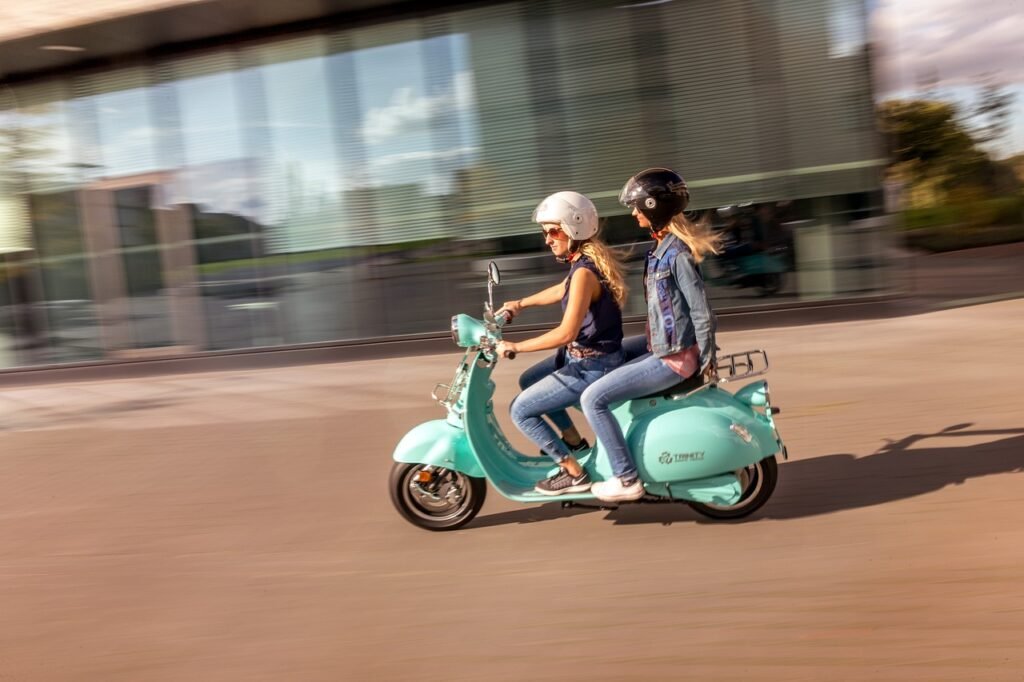
This image is property of pixabay.com.
Tips for Emergency Braking
In emergency situations, knowing how to execute an emergency stop can make all the difference between avoiding a collision or getting into an accident. Here are some tips for mastering emergency braking:
-
Stay calm: Keep a cool head and focus on applying the brakes smoothly and progressively.
-
Use both brakes: Apply both the front and rear brakes simultaneously for maximum stopping power.
-
Shift your weight: Shift your weight slightly backward to help stabilize the scooter and prevent flipping over.
-
Practice, practice, practice: Find a clear, open space to practice emergency stops at different speeds to build muscle memory.
By practicing emergency braking techniques, you’ll be better prepared to handle unexpected situations on the road and keep yourself safe.
Conclusion
Congratulations! You’ve now learned everything you need to know about mastering scooter braking. By understanding the different types of braking techniques, knowing when to use them, calculating braking distances, maintaining your brakes, and practicing emergency stops, you’ll be well-equipped to handle any braking situation with confidence and efficiency. Remember to always ride safely and responsibly, and happy scootering!






